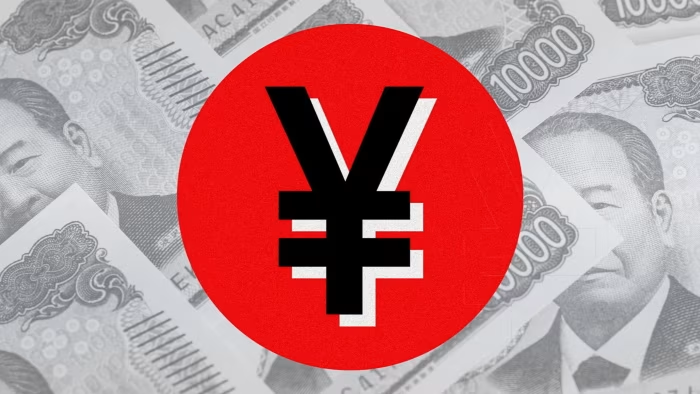Unlock the Editor’s Digest for free
Roula Khalaf, Editor of the FT, selects her favourite stories in this weekly newsletter.
Why he even thought of going on a tour of Japan is beyond me. But family legend has it that, at the end of a film about the bomb in the Hiroshima Memorial Museum, as everyone else sat in silent contemplation, my grandpa clapped. I cringe to this day.
My other grandfather had more reason to question my studying Japanese and subsequent love of the country — but he never did. He served in Darwin, protecting Australia from attack from the north. (Not that it needed defending. “Konnichi-wa, mate. Sydney is four thousand clicks across the desert in that direction. Good luck!”)
I’ve written before about my gap year in Kanazawa and my first job out of university running Japanese equity portfolios. The point being that I am positively biased when it comes to the land of the rising sun. Don’t listen to a word I say about the place.
Hence, too, I ended up with almost half my pension in a FTSE Japan fund. Sure, I had my reasons beyond a long obsession. But plenty of other markets are attractive for similar reasons and I haven’t jumped on top of them.
Luckily, Japanese equities have rallied 20 per cent over the past 12 months even in sterling, which has strengthened a tad against the yen. Add to this a cheeky top-up when stocks plunged in April and that explains most of my outperformance this year.
Blind passion isn’t a good investment strategy, though. No doubt there are issues I’m refusing to acknowledge. And just because I keep telling readers that Japan is undervalued doesn’t make it so forever — especially given recent gains.
So are Japanese equities still cheap? Well, the first thing to do when trying to answer this question is to define what we mean by cheap. As per last week’s column on emerging markets, I have never cared that shares on the Tokyo stock exchange trade at a discount to US companies, for example.
I’m an absolute, not relative, investor. In other words, I want the value of my Japanese fund to rise, not just to outperform the S&P 500 or Euro Stoxx or whatever as they decline. Therefore what matters to me is today’s valuation versus its own history.
No metrics are perfect. Therefore, I like to analyse as many of them as possible. Out of habit only, let’s compare the price of Japanese shares to various items in their aggregate profit and loss statements first. Where possible (that is, where I can find robust data going back a long way) I will focus on the broader Topix of 3,942 companies, rather than the Nikkei 225, with . . . you guessed it.
Recommended

What about price-to-earnings then? After a strong run since early October, when it became clear that the pro-growth Sanae Takaichi would be Japan’s next prime minister, the Topix now trades at 20 times its net profits compared with a two-decade average of 18.8, according to CapitalIQ data.
Go back 40 years, however, which includes the dotcom period as well as the bonkers 1980s bubble (the land under the Imperial Palace was worth more than all of California, etc) and the average price/earnings ratio is 23 times.
So the Topix is a bit more expensive than history on a 20-year view, but cheaper on a 40-year view. There’s a caveat, however. Anyone glancing at the charts would immediately see that recent averages are distorted by the pandemic as well as the aftermath of the financial crisis, when earnings collapsed and PE ratios soared to 30 and 60 times respectively.
If I normalise those periods, the average PE ratio for the past two decades drops to 17 times, making current levels about a fifth higher. To be sure, profits growth is strong, but even today’s forward PE (that is, using forecast earnings) is about a tenth more expensive.
But profits after tax are a pretty crude measure, for reasons I’ve written about before. How about enterprise value — which includes debt — to earnings before interest tax, depreciation and amortisation (kind of like core operating cash flow) compared with history?
On this basis, too, Japanese shares are rich compared with the past 20 years — almost 30 per cent more so. It’s a little less on a five- and 10-year basis, but still relatively dear. How about using sales? Don’t look. Price-to-revenue ratios are more than a third higher versus the past 30 and 40 years.
Things don’t look as frothy if we instead compare the Topix to asset values rather than profits, ebitda and revenues. Today’s price-to-book ratio of 1.5 times is bang in line with the average over the past three decades. And it’s only about 15 per cent expensive on a five-, 10- and 20-year view.
To be fair, I should strip out the periods when this ratio collapsed during Covid and the financial crisis (stock markets dropped, whereas balance sheets were sturdier). But prices recovered much faster than earnings did above, hence long-run averages don’t change much.
What can we conclude from all of this? The reality is that a market which has more than doubled in the past 10 years — having also doubled in the three years before that — is not going to be as cheap as it was. Not my cleverest observation, admittedly.
Then again, valuations at their long-run averages or even a quarter or third above does not mean they are going to quit there. Far from it. Earnings multiples, for example, could triple again if you reckon AI is the new dotcom. Likewise if we return to mid-1990s Japan.
Nevertheless, I’m going to have to stop rabbiting on about Japan being cheap (on an absolute basis) every week. I can hear one grandpa applauding from the heavens.
The author is a former portfolio manager. Email: stuart.kirk@ft.com; X: @stuartkirk__


AloJapan.com